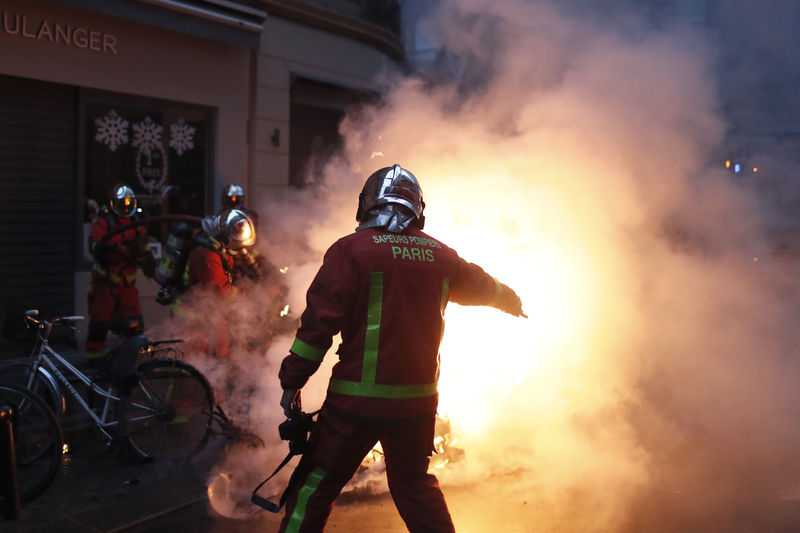Rioting engulfs Paris as anger grows over high French taxes
09 December, 2018

The rumble of armored police trucks and the hiss of tear gas filled central Paris on Saturday, as French riot police fought to contain thousands of yellow-vested protesters venting their anger against the government in a movement that has grown more violent by the week.
A ring of steel surrounded the president’s Elysee Palace — a key destination for the protesters — as police stationed trucks and reinforced metal barriers throughout the neighborhood.
Stores along the elegant Champs-Elysees Avenue and the posh Avenue Montaigne boarded up their windows as if bracing for a hurricane but the storm struck anyway Saturday, this time at the height of the holiday shopping season. Protesters ripped off the plywood protecting the windows and threw flares and other projectiles. French riot police repeatedly repelled them with tear gas and water cannon.
Saturday’s yellow vest crowd was overwhelmingly male, a mix of those bringing their financial grievances to Paris — the center of France’s government, economy and culture — along with groups of experienced vandals who tore steadily through some of the city’s wealthiest neighborhoods, smashing and burning.
Police and protesters also clashed in other French cities, notably Marseille, Toulouse and Bordeaux, and in neighboring Belgium. Some protesters took aim at the French border with Italy, creating a huge traffic backup near the town of Ventimiglia.
The French government’s plan was to prevent a repeat of the Dec. 2 rioting that damaged the Arc de Triomphe, devastated central Paris and tarnished the country’s global image. It did not succeed, even though it was better prepared.
Although Saturday’s protest in the French capital started out quietly, tear gas choked the Champs-Elysees Avenue by early evening.
Interior Minister Christophe Castaner said that 135 people had been injured and 974 taken into custody amid protests around the nation. Paris police headquarters counted 71 injuries in the capital, seven of them police officers.
An estimated 125,000 people demonstrated around France while 10,000 took their anger to the streets of Paris, double the number in the capital last week, the interior minister said. Toughening security tactics, French authorities deployed 8,000 security officers in the capital alone, among the 89,000 who fanned out around the country.
A Starbucks near the Champs-Elysees was smashed wide open and people were seen stepping over broken glass and serving themselves to beverages. The window of a nearby bank was smashed in with a wrought-iron decoration used to encircle city tree trunks.
All of the city’s top tourist attractions — including the Eiffel Tower and the Louvre museum — shut down for the day, fearing the kind of damage that hit the Arc de Triomphe a week ago. Christmas markets and soccer matches were cancelled. Subway stations in the city center closed and the U.S. embassy warned citizens to avoid all protest areas.
Yet in a sign of the financial disconnect that infuriates many of the protesters, a few blocks from the famed boulevard, people were sitting in Paris cafes, drinking cocktails and chatting.
Amid the melee, President Emmanuel Macron remained invisible and silent, as he has for the four weeks of a movement that started as a protest against a gas tax hike and metamorphosed into a rebellion against high taxes and eroding living standards.
The mayor of the city of Saint-Etienne, a town in southeast France hit by violence Saturday, castigated Macron for failing to speak out, saying it “feeds the resentment.”
“This silence becomes contempt for the nation,” the mayor, Gael Perdriau, of the opposition conservative party, said on BFMTV. “He has a direct responsibility in what is happening. He can’t remain closed up in the Elysee.”
France’s yellow vest protesters have political stances ranging from the far right to the far left but the leaderless group is united in its sense that Macron and his government are out of touch.
“We are here to tell (Macron) our discontent. Me, I’m not here to break things because I have four children,” said protester Myriam Diaz. “But I still want to be here to say ‘Stop, that’s enough.’”
